Despite the economic value of the recreational permit fishery in Florida and the wider Caribbean, there has never been a stock assessment, and even basic data are lacking, such as fishing effort, harvest, habitat use, migration patterns, age structure, growth rates. Some anecdotal evidence suggests a decline in the fishery in Florida, but without fisheries data there is no way to verify or refute the anecdotal reports. The pseudo-stock assessment conducted in 1996 states “there are little data available with which to assess the condition of the permit stock(s)”, and the data status is unchanged in 2010.
The permit fishery in Florida is very diverse, ranging from sight fishing on flats with fly rods to fishing on offshore reefs with conventional gear. Similarly, some sectors of the fishery are catch and release while others harvest permit. Much of the effort on offshore reefs focuses on what are likely spawning aggregations of permit, where harvest may cause problems in the future.
BTT is taking a proactive collaborative approach which will obtain data while the fishery appears to be in relatively good health. We worked with the Florida Fish and Wildlife Conservation Commission to improve regulations for permit, and are working to gather more information to determine what other management steps are needed.
The first step is to determine the spatial dynamics of the fish and fishery. This is being done in two ways: via a five-year tagging program in which guides and anglers are tagging permit with dart tags and a three-year acoustic tagging program in the Lower Florida Keys. We have dart tagged over 1,000 fish to date, and had 30 recaptures, showing that many permit have a small home-range, but some travel longer distances (up to 120 miles one way).
Data will be used to estimate movement patterns and define the geographic scale most appropriate for management. Length data from tag and recapture reports will provide the first information on the size structure of the permit fishery. Future work will examine effects of catch and release on permit, improve estimates of fishing effort and harvest, examine factors associated with spawning, develop a better understanding of permit age and growth, and determine the economic value of the fishery.
BTT’s acoustic tagging project began in September 2015. Small acoustic transmitters, each with a unique subsonic ping, are surgically implanted in permit. The goal is to place transmitters in 30 permit in each year of the study.
The pings from the transmitters will be detected by an array of 60 receivers placed in the Lower Keys. If a permit swims in range of a receiver, it will be detected and recorded. If any of the permit are detected by scientific colleagues’ receivers in the Keys and along the coasts of Florida, they will be reported to us.
Ongoing Projects
Archive of Permit Research
Studies Receiving BTT Support
Patterns of juvenile habitat use and seasonality of settlement by permit, Trachinotus falcatus. Download PDF
General Archive of Research Articles
Adams, A. J. & Blewett, D. A. (2004). Spatial patterns of estuarine habitat type use and temporal patters in abundance of juvenile permit, Trachinotus falcatus, in Charlotte Harbor, Florida. Gulf and Caribbean Research 16, 129-139.
Adams, A. J., et al. (2006). “Patterns of juvenile habitat use and seasonality of settlement by permit, Trachinotus falcatus.” Environmental Biology of Fishes 75: 209-217.
Armstrong, M. P., et al. (1996). A stock assessment of Permit, Trachinotus falcatus, in Florida waters. St. Petersburg, Florida Department of Environmental Protection – Florida Marine Research Institute: 11.
Crabtree, R. E., et al. (2002). “Age, growth, and reproduction of permit (Trachinotus falcatus) in Florida waters.” Fish. Bull. 100: 26-34. Download PDF
Finucane, J. H. (1969). “Ecology of the pompano (Trachinotus carolinus) and the permit (T. falcatus) in Florida.” Transactions of the American Fisheries Society 3: 478-486.
Jory, D. E. (1986). “An incident of predation on queen conch, Strombus gigas L. (Mollusca, Strombidae), by Atlantic permit, Trachinotus falcatus L. (Pisces, Carangidae).” J. Fish. Biol. 28: 129-131.



